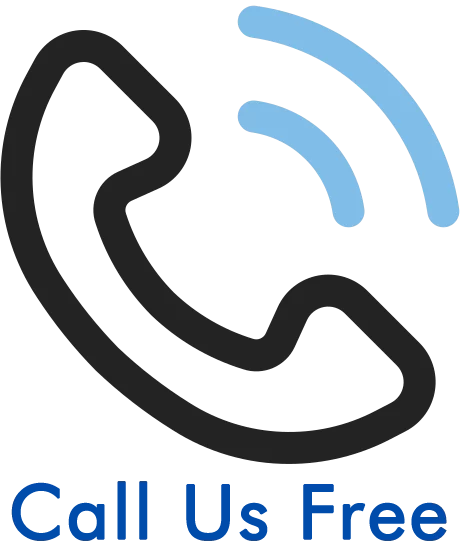Poor Lighting In The Workplace – Claiming When A Hazard Causes An Accident
Has poor lighting in the workplace resulted in you sustaining injuries? If so, you may be eligible to make an accident at work claim to be compensated for your suffering with the help of the expert solicitors on our panel.
Key Takeaways:
- If poor lighting in the workplace caused you to suffer from an injury at work, you may be eligible to make an accident at work claim.
- Your employer is legally obligated to ensure you are safe at work; if they fail to do so, you may be entitled to compensation.
- The amount of compensation you may be awarded depends on the injuries you sustained and whether you also incurred financial losses.
- You must start your claim within three years of the accident. However, there may be some exceptions to this.
- Our panel of accident at work solicitors may help you claim compensation on a No Win No Fee basis.
To start your accident at work claim today, get in touch with our helpful advisors:
- Visit our contact page
- Call our advisors on 020 3870 4868
- Message our advisors on our live chat
Jump To A Section
- Poor Lighting Hazards – Your Employer’s Responsibilities
- What Are The Effects Of Poor Lighting In The Workplace?
- Can I Claim After An Accident Caused By Poor Lighting?
- How Much Compensation You Can Claim
- How To Claim After An Accident Caused By Poor Lighting In The Workplace
- How Our Panel Of Solicitors Can Help You
- More Information
Poor Lighting Hazards – Your Employer’s Responsibilities
Under the Health and Safety at Work etc. Act 1974, all employers have a duty to take reasonable and practicable steps to ensure their employees remain safe at work. The Health and Safety Executive has published guidelines on how employers can fulfil this duty of care and keep employees safe.
Regulation 8 of The Workplace (Health, Safety and Welfare) Regulations 1992 states that suitable and efficient lighting must be present in all workplaces. An employer may be in breach of their duty of care if the lighting in a work space is inadequate. Some of the responsibilities your employer has to prevent poor lighting hazards include:
- Completing safety checks
- Conduct lighting assessments
- Ensuring the lighting is adequate for the work employees are completing
If poor lighting at work causes you to sustain an injury, contact our advisors today to find out if you can claim compensation.
What Are The Effects Of Poor Lighting In The Workplace?
Poor lighting in the workplace can be hazardous, no matter what line of employment you are in. This is because poor lighting ultimately reduces your visibility, potentially having the following effects:
- Eyestrain
- Fatigue
- Headaches
- Reduce productivity
- Poor posture
Further, poor lighting may increase the chances of workplace accidents, such as slips, trips and falls, or injuries caused by tools or equipment. As such, employers must ensure that workplace lighting is well managed and assessed to prevent employees from sustaining injuries.
To start an accident at work claim caused by poor lighting in the workplace, contact our advisors today.
Can I Claim After An Accident Caused By Poor Lighting?
If you have sustained an injury caused by poor lighting at work, you may be eligible to make an accident at work claim. However, you must meet the specific eligibility criteria below:
- Your employer must owe you a duty of care
- Your employer must have been in breach of this duty
- This must have resulted in your injuries
For example, you may be walking downstairs in your workplace. If your employer failed to maintain adequate lighting on the staircase and you fell, injuring your leg, you may be eligible to make a claim. This is because your employer would have breached their duty of care by failing to provide adequate lighting and ensuring your safety.
Contact our advisors today to find out if you are eligible to claim compensation for an injury caused by poor lighting at work.
How Much Compensation You Can Claim
If you were injured in a workplace accident caused by poor lighting, you may wonder, ‘How much compensation can I claim?’
Although we can not give you an accurate figure at this stage, we can explain what you can be compensated for and provide examples of how much you may receive.
Factors Considered In Your Payout
In a successful accident at work claim, compensation is divided into two heads of claim: general and special damages. This ensures you are compensated for all your suffering and losses.
General damages compensate you for the physical injuries and psychological suffering you encountered due to your accident. They are typically calculated by a professional team that refers to documents, such as an independent medical assessor’s report and guidelines presented by the Judicial College (JCG), to ensure your award is fair and accurate. The JCG is a document that lists many types of injuries and their suggestive compensation brackets.
The table below provides examples from the JCG, except the top bracket, of injuries and their corresponding guideline compensation brackets.
| Injuries | Compensation |
|---|---|
| Severe Injuries and Significant Financial Losses | Up to £1 million plus |
| Very Severe Brain Damage | £344,150 to 493,000 |
| Severe Back Injuries (ii) | £90,510 to £107,910 |
| Severe (ii) Neck Injuries | £80,240 to £159,770 |
| Arm Injuries Resulting in Permanent and Substantial Disablement | £47,810 to £73,050 |
| Serious Leg Injuries | £47,840 to £66,920 |
| Serious Foot Injuries | £30,500 to £47,840 |
| Modest Foot Injuries | Up to £16,770 |
| Moderate Pelvis and Hip Injuries (ii) | £15,370 to £32,450 |
| A Number of Noticeable Laceration Scars or One Single Disfiguring Scar | £9,560 to £27,740 |
Special Damages
Special damages are the head of claim that compensate you for any financial losses you incurred as a resulted from your injury. Some examples of what you may claim special damages for include:
- Missed wages following any time off work
- Missed work benefits such as holiday entitlements or bonuses
- Costs towards travel, medical care, childcare, home adjustments or special equipment
When claiming for special damages, you must provide evidence of the losses you incurred, such as:
- Payslips
- Bank statements or credit card notes
- Receipts and bills
Our panel of solicitors may help you obtain evidence if you have incurred financial losses.
Contact our advisors for more information on compensation for accidents caused by poor lighting at work.
How To Claim After An Accident Caused By Poor Lighting In The Workplace
You may believe filing an accident at work claim is a long and difficult process. However, it is
rather simple, and our advisors and panel can support you every step of the way.
After reading the information below, you will understand how to claim compensation after a work accident caused by poor lighting and how our panel of solicitors can help.
Gathering Evidence – What You’ll Need To Prove Employer Liability
It is incredibly important to prove that your employer was liable for your injuries, as this would determine the success of your claim. To establish liability, you must provide evidence that your employer was responsible for the poor lighting at work, contributing to your injuries.
Some examples of evidence you may obtain include:
- CCTV or dashcam footage of your accident
- A copy of the accident report book
- Photographs of your injuries
- Documents or reports of workplace safety checks and assessments
If you cannot access evidence that supports your claim, our panel of solicitors may be able to assist you with this.
How Long You Have To Begin A Claim
If you want to make an accident at work claim, you typically have three years from the accident date to do so. This is a requirement of the Limitation Act 1980. However, there may be some exceptions to this, such as:
- If the claimant is a minor (under eighteen), the time limit will be paused until they turn eighteen years old and end when they turn twenty-one.
- Under the Mental Capacity Act 2005, the time limit will be indefinitely paused if the claimant lacks mental capacity and cannot make a claim themselves. However, the three-year time limit will commence if they regain mental capacity.
If the time limit on a claim is paused, a litigation friend may start the claim on behalf of the claimant. Our advisors may discuss this in more detail with you.
Contact our advisors to learn more about the time limit on your accident at work claim,
How Our Panel Of Solicitors Can Help You
If you want to claim compensation for injuries caused by poor lighting at work, you may benefit from the help of our experienced panel. They are specialist in accident at work claims and can use their expertise to help you by:
- Walking you through the claims process
- Explaining any legal terminology and documents
- Helping you obtain evidence
- Building your case
- Negotiating settlements on your behalf
Our panel of solicitors work on a No Win No Fee basis; this means you may sign a Conditional Fee Agreement (CFA) with them. Here are some benefits of claiming with a solicitor through a CFA:
- If your claim is successful, you must pay a success fee. However, our panel of solicitors will take a legally capped minimal percentage of your compensation to cover this cost.
- If your claim is unsuccessful, you do not have to pay any costs for our panel of solicitor’s work on your claim.
To start your accident at work claim today, get in touch with our helpful advisors:
- Visit our contact page
- Call our advisors on 020 3870 4868
- Message our advisors on our live chat
More Information
For more information on accident at work claims, visit the following links:
- Learn how to calculate compensation for a workplace accident
- Find out how long after an accident at work you can claim
- Learn why it is important to report accidents at work
References:
- Find your nearest urgent treatment centre, NHS.UK
- Find out if you are entitled to statutory sick pay, GOV.UK
- Learn more about the types of reportable incidents at work, HSE.UK
Thank you for taking the time to read this guide, which discusses how to claim compensation for injuries caused by poor lighting in the workplace.






